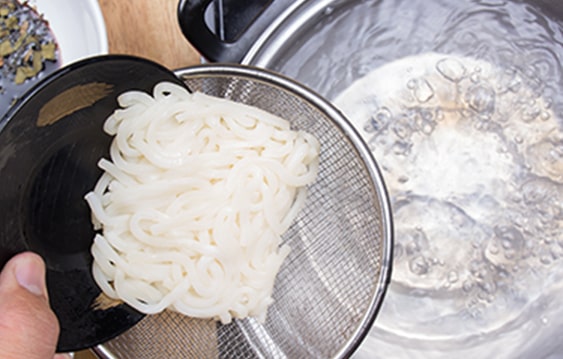Noodles
Alginate is an excellent noodle modifier. Alginate improves the texture of noodles by adding hardness and elasticity to the wheat flour. It has been used in noodles for many years by major manufacturers, including instant noodles and chilled noodles, as well as an increasing number of uses in dry noodles.
It can also be used to process new types of noodles, such as low-sugar noodles and gluten-free noodles.
Applications and effects
※Alginic acid and all products derived from it are collectively called Alginate. Please note the correct product name for each application.
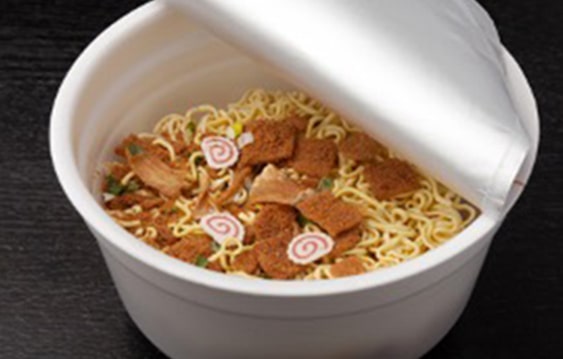
Instant noodles
Improves the noodles by giving stiffness and a smooth texture.
![]()
![]()

Instant noodles, which can be eaten quickly just by adding hot water, tend to soften because the storage period after being heated in the factory is long and the starch ages during this time. This means that the noodles sometimes break apart making it difficult to eat with chopsticks.
Instant noodles containing alginate increase in stiffness and have an improved mouthfeel after the addition of water making these noodles suitable in many products.
- 【Alginate to be used】
- Alginic Acid
- Sodium Alginate
- Propylene Glycol Alginate
- Propylene Glycol Alginate
- 【Recommended dosage】
- 0.1~0.5% against flour
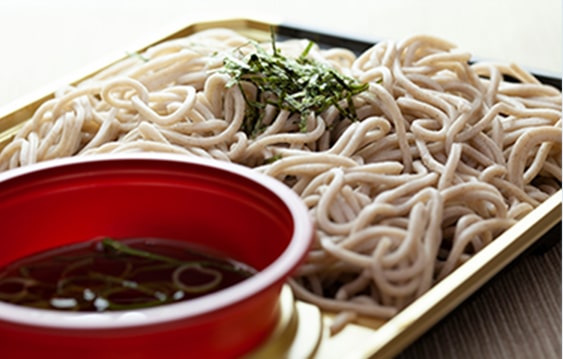
Chilled noodles
Noodles are harder to stick together and make them more likely to disperse.
![]()
![]()
When consumers eat chilled noodles that are sold at convenience stores and supermarkets, considerable time has passed since the noodles were cooked, so maintaining good noodle texture is important. Alginate is widely used as an improver for the texture of chilled noodles.
Boiling alginate-containing noodles in calcium-containing water creates an alginate gel coating on the surface of the noodles preventing the exudation of starch. As a result, the noodles become less sticky and the noodles dispersibility can be improved. Alginate is also used to improve texture and dispersibility in chilled noodles that are eaten by exposing them to flowing water.
- 【Alginate to be used】
- Alginic Acid
- Sodium Alginate
- Propylene Glycol Alginate
- Propylene Glycol Alginate
- 【Recommended dosage】
- 0.1~0.5% against flour

Pasta
Improves the hardness after boiling and prevents the texture from softening.
![]()
![]()
Adding alginate to pasta improves the hardness after boiling and prevents the texture from softening. The texture of frozen pasta can also be improved after microwaving. It has also been reported to have the effect of preventing dried noodles from breaking during storage.
- 【Alginate to be used】
- Propylene Glycol Alginate
- Propylene Glycol Alginate
- 【Recommended dosage】
- 0.1~0.5% against flour
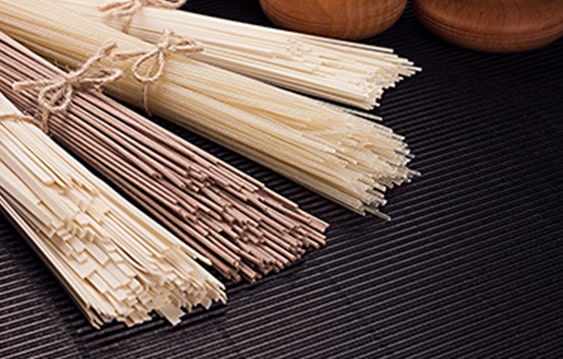
New types of pasta and noodles
Alginate helps to incorporate new ingredients into noodles.
![]()
![]()
Due to the health-conscious and diet boom, new types of noodles (such as low calorie, low sugar, and gluten-free) are needed. To provide these new products, non-wheat-based noodles are required.
The alginate gelling function can be used to make noodles from ingredients not normally used, such as soybeans, rice flour and seaweeds.
- 【Alginate to be used】
- Alginic Acid
- Sodium Alginate
- Propylene Glycol Alginate
- Propylene Glycol Alginate
- 【Recommended dosage】
- 0.1~0.5% against flour

Low-sugar noodles
Using alginate, delicious noodles with a good texture using non-wheat flour can be made.
![]()
![]()
Noodles made with grains (such as soybeans) have a lower sugar content than wheat noodles. Tofu can also be processed into noodles but the texture is too soft to make into a well-formed noodle.
Alginate can solve these problems. Alginate and calcium gelation can provide good strength and texture to noodles. Alginate gels are heat resistant, so heat sterilization is also possible.
- 【Alginate to be used】
- Propylene Glycol Alginate
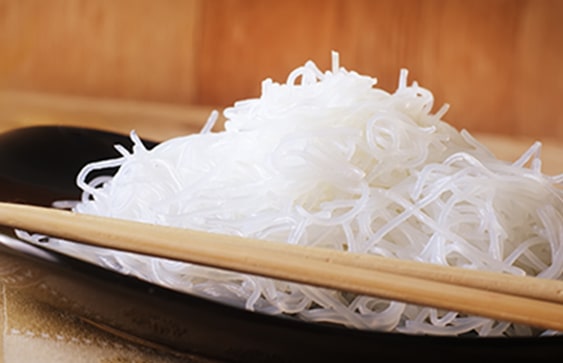
Gluten-free noodles (Rice flour noodles)
Easier to handle dough and easier processing into noodles.
![]()
![]()
Gluten (a protein in wheat flour) is a known allergen in wheat. Gluten-free foods were originally developed as dietary treatments for people with wheat allergies, but in recent years they have also gained popularity in health foods. A typical type of gluten-free noodle is based on rice flour. However, it is very difficult to process rice flour into noodles, as it gets very soft or even melts when boiled.
When alginate is blended into rice flour noodles, the dough becomes workable and noodle processing becomes easier. The noodle strength increases and the texture after boiling are also good. Starch exudation when boiling is suppressed. In addition to improving the yield of noodles, the turbidity of boiling water is reduced and the cleaning effort is also reduced.
